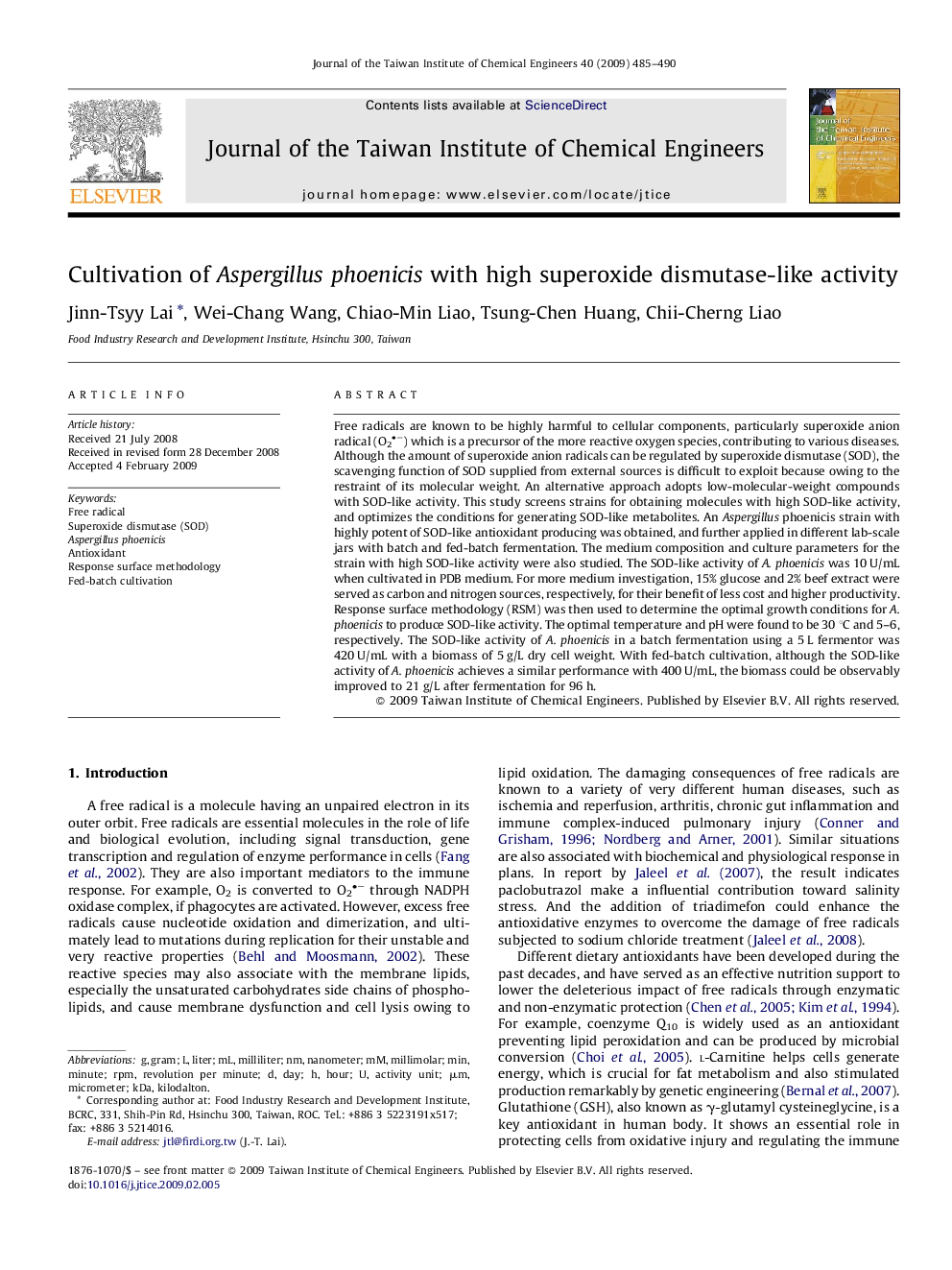| Article ID | Journal | Published Year | Pages | File Type |
|---|---|---|---|---|
| 691949 | Journal of the Taiwan Institute of Chemical Engineers | 2009 | 6 Pages |
Free radicals are known to be highly harmful to cellular components, particularly superoxide anion radical (O2−) which is a precursor of the more reactive oxygen species, contributing to various diseases. Although the amount of superoxide anion radicals can be regulated by superoxide dismutase (SOD), the scavenging function of SOD supplied from external sources is difficult to exploit because owing to the restraint of its molecular weight. An alternative approach adopts low-molecular-weight compounds with SOD-like activity. This study screens strains for obtaining molecules with high SOD-like activity, and optimizes the conditions for generating SOD-like metabolites. An Aspergillus phoenicis strain with highly potent of SOD-like antioxidant producing was obtained, and further applied in different lab-scale jars with batch and fed-batch fermentation. The medium composition and culture parameters for the strain with high SOD-like activity were also studied. The SOD-like activity of A. phoenicis was 10 U/mL when cultivated in PDB medium. For more medium investigation, 15% glucose and 2% beef extract were served as carbon and nitrogen sources, respectively, for their benefit of less cost and higher productivity. Response surface methodology (RSM) was then used to determine the optimal growth conditions for A. phoenicis to produce SOD-like activity. The optimal temperature and pH were found to be 30 °C and 5–6, respectively. The SOD-like activity of A. phoenicis in a batch fermentation using a 5 L fermentor was 420 U/mL with a biomass of 5 g/L dry cell weight. With fed-batch cultivation, although the SOD-like activity of A. phoenicis achieves a similar performance with 400 U/mL, the biomass could be observably improved to 21 g/L after fermentation for 96 h.
